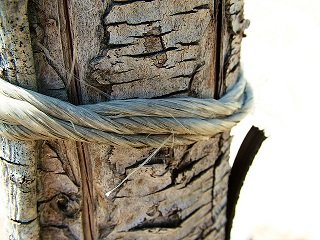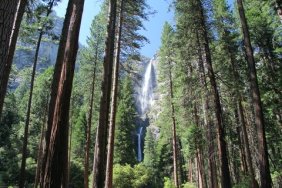 The Leave No Trace movement is really the core of what true outdoorsmen believe about enjoying the wilderness. Not only does implementing LNT practices protect the delicate ecosystems of the trails we love to hike, but it also ensures that future generations will be able to enjoy them, as well. So far in this series, we’ve learned a little about the importance of switchbacks, how to hike on muddy trails, the proper way to handle campfires, and most recently, how to pack out what you pack in. Today, we’ll continue with a look at using ropes in conjunction with trees at your site.
The Leave No Trace movement is really the core of what true outdoorsmen believe about enjoying the wilderness. Not only does implementing LNT practices protect the delicate ecosystems of the trails we love to hike, but it also ensures that future generations will be able to enjoy them, as well. So far in this series, we’ve learned a little about the importance of switchbacks, how to hike on muddy trails, the proper way to handle campfires, and most recently, how to pack out what you pack in. Today, we’ll continue with a look at using ropes in conjunction with trees at your site.
Rope is a common piece of gear to have with you in the backcountry, due to its versatility and usefulness. Rope can be used to tie down gear while driving or during heavy winds, hoist food to keep it away from bears, or to pull people to safety in an emergency. However, as with any piece of gear, knowing how to use your rope properly and safely makes a big difference, especially when you’re trying to leave no trace.
If you use fasten rope to trees around your campsite, you’ll want to learn how to do so in ways that won’t harm the tree. Ropes can actually damage the tree’s bark, due to the pressure of the rope pulling tight against tree, or from rope burn as the rope moves across the bark. This can be caused by things like hammocks and clothes lines, too. Not just camping purposes. Soft and thin bark on trees like pines, spruce, birch, or aspens are especially prone to bark damage from your ropes, too. For this reason, it’s best to limit your rope use to hardwood trees with thicker bark.
As commonplace as ropes are around the campsite, it’s entirely possible to keep from causing rope damage to trees, believe it or not. By using and item, such as a bandana or sock, you can make a big difference. Simply use these items as a cushion by wrapping them around the trunk first, and then tying your rope around them. You can also purchase “tree hugger” straps, which are made from nylon webbing and more evenly distribute weight and prevent damage when you’re using a rope.
It’s frustrating when I’m hiking and come across rope damage on trees along the trail. I’m not mad at anyone in particular, mind you, just more at the fact that they don’t take more time to educate themselves. It only takes a few moments to learn simple, yet effective ways to help preserve our natural resources and enjoy them for many years. I hope you’ve taken the tips in this series to heart and out them into practice the next time you hit the trail.








